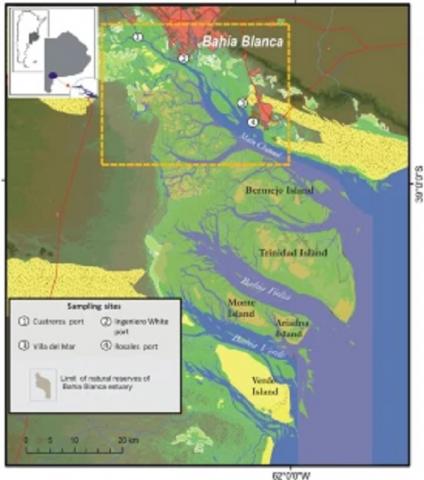M. E. Bravo, S. M. Fiori & M. E. Carbone
2 021
Hydrobiologia volume 848, pages563–579(2021)
The management of invasive species in large, little-known, nature reserves is difficult. Weighing the risk of invasion against the conservation value of each sector in nature reserves would help design viable management strategies. We evaluated the invasion risk of the Pacific oyster (Crassostrea gigas) in nature reserves in the Bahía Blanca estuary (Argentina). We tested the hypothesis that there were areas of high conservation value in the nature reserves that are susceptible to invasion by C. gigas. We measured its spatial expansion and increase in density on the north coast of the estuary from 2010 to 2015. This allows establishing its preferences of substrate type and tide level in the intertidal zone, hereafter geo-environmental units. We mapped these geo-environmental units within nature reserves using GIS analysis. We found high risk of invasion in 246 hectares of high priority sectors in nature reserves, which minimized the need of management efforts to 13.5% of the total area of nature reserves. We highlight the sectors where C. gigas would generate the strongest impact, as well as where management efforts would be more cost-effective. Our approach provides a framework that can be used to assess risk in nature reserves and help identify management priorities.

